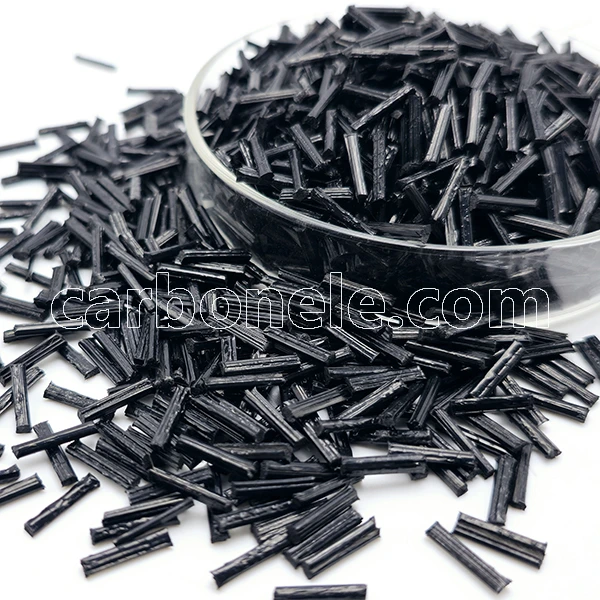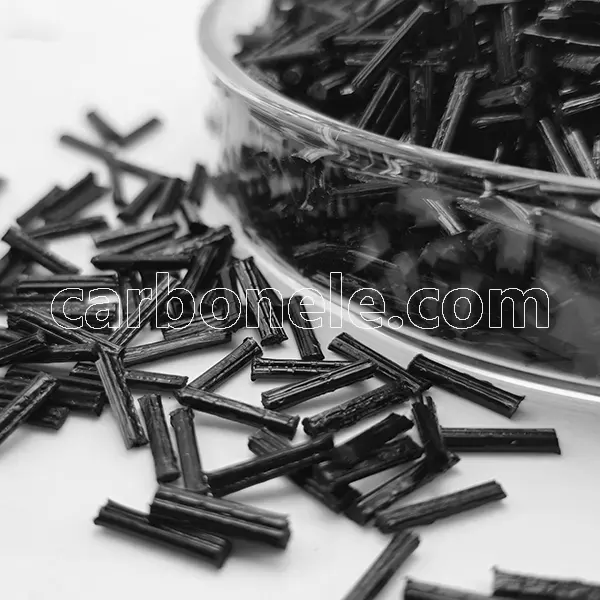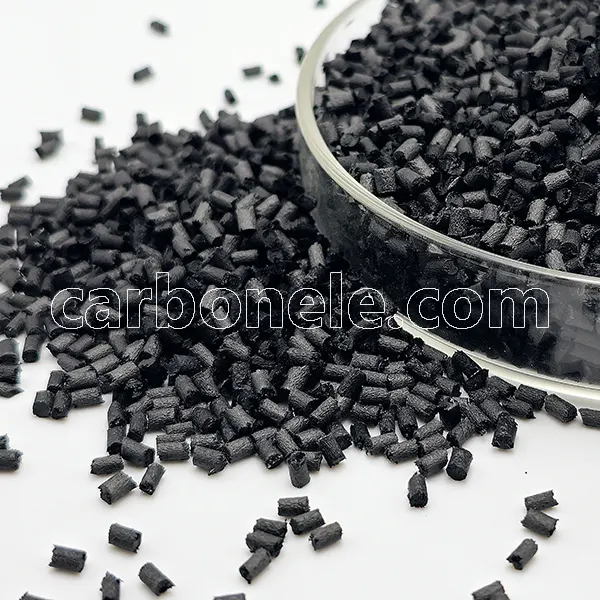Can Your Current Plastic Handle The Heat Like PC-CF Can? - Carbon Fiber Compounds Manufacturer | Supplier
Discover how PC Carbon Fiber Reinforced Composite outperforms standard plastics in heat resistance, strength, and durability. Ideal for automotive, drones, and LED systems. Upgrade your engineering plastic today.
Can Your Current Plastic Handle the Heat Like PC-CF Can?
Introduction: Why Heat Resistance Is a Game-Changer in Plastics
In today’s demanding industrial environments, heat resistance is not a luxury — it’s a requirement. From automotive engine components to high-powered LED housings, the materials used must endure extreme temperatures without cracking, deforming, or losing their structural integrity.
Yet many manufacturers still rely on conventional plastics that simply can’t take the heat.
Enter PC Carbon Fiber Reinforced Composite — a new generation of engineering plastic that solves the thermal and mechanical challenges that pure polycarbonate (PC) and other common thermoplastics struggle with.
What Is PC Carbon Fiber Reinforced Composite?
PC Carbon Fiber Reinforced Composite is a thermoplastic material made by combining polycarbonate resin with carbon fiber — either in short, long, or continuous form — to create a high-performance material with significantly enhanced strength, stiffness, and thermal resistance.
Key Properties:
-
Higher Heat Deflection Temperature (HDT)
-
Improved Dimensional Stability
-
Superior Tensile and Flexural Strength
-
Reduced Thermal Expansion
-
Lightweight Yet Rigid
Applications Include:
-
Automotive lighting housings
-
Electronics enclosures
-
Drone chassis
-
Aerospace panels
-
Industrial gear covers
-
Medical device shells
Section 1: Where Traditional Plastics Fail
Common Issues with Pure Polycarbonate or ABS Plastics:
-
Deformation Under Heat
Most standard PC materials begin to lose structural integrity above 120–130°C. -
Cracking Under Stress
High-load environments cause microcracks, especially under repeated thermal cycling. -
Poor Creep Resistance
Continuous mechanical load over time can cause plastic to sag or shift. -
Surface Finish Degradation
High heat can lead to surface whitening, discoloration, or even melting.
Section 2: How PC-CF Solves the Problem
Mechanism of Reinforcement
Carbon fiber not only reinforces the polymer matrix, but also restricts molecular mobility — making the material far more heat and fatigue resistant. In short, PC-CF maintains form and strength under pressure.
Performance Comparison Table
| Property | Pure PC | PC-CF (20%) |
|---|---|---|
| Heat Deflection Temp (°C) | ~130 | ~155 |
| Flexural Modulus (MPa) | ~2300 | ~6000+ |
| Tensile Strength (MPa) | ~60 | ~90–110 |
| Thermal Expansion Coefficient | High | Low |
| Impact Resistance | Good | Excellent |
Section 3: Industry Use Cases and Real-World Success
1. Automotive LED Headlamp Housing
A leading German automotive brand replaced traditional PC with PC-CF20 for their LED headlamp housings. After 6 months of field testing:
-
Zero warping at sustained 130°C internal temp
-
30% reduction in reject rate due to improved dimensional consistency
-
Improved crash performance
2. High-Performance Drone Shell
A Southeast Asian drone startup switched to PC-CF10 for lightweight drone frames:
-
Weight reduced by 15% compared to ABS
-
Structural stiffness improved by 40%
-
Better shock absorption on landing
3. Industrial Electronics Casing
An American OEM chose PC-CF30 for casing in high-heat electrical control units:
-
Continuous use at 140°C without loss of integrity
-
Passed UL94 V-0 flammability standard
-
Improved cycle time in injection molding
Section 4: Expert Insights
“As industries move toward more compact and powerful devices, thermal load per volume is increasing. Materials like PC-CF are not optional anymore — they’re essential.”
— Dr. Amanda Keene, Materials Science Lead, ThermoForm Research Lab
“We’ve seen a significant uptick in companies requesting PC-CF for both mechanical strength and heat tolerance. Its balance of toughness and weight is unmatched.”
— Jacob Lin, Senior Product Engineer, AeroComp Composites
Section 5: Backed by Scientific Data
According to a study in the Journal of Reinforced Plastics and Composites, PC-CF composites exhibit:
-
32% higher thermal endurance
-
2.8x greater stiffness retention after 1000 hours at 130°C
-
25% reduction in creep deformation
A thermogravimetric analysis (TGA) report by PolyMaterials Tech Ltd. also shows that carbon fiber increases the decomposition threshold of PC by nearly 15°C, enhancing its flame retardant properties.
Section 6: Long-Term Trends in Heat-Resistant Plastics
Industry Trend Highlights:
-
10.8% CAGR forecasted for carbon fiber reinforced thermoplastics (CFRTP) through 2030
-
Automotive, aerospace, and consumer electronics sectors are key growth drivers
-
Increased focus on weight reduction and thermal reliability is pushing engineers away from metals and toward high-performance composites like PC-CF
Section 7: Choosing the Right PC-CF Grade
When selecting a PC Carbon Fiber Reinforced Composite, consider:
-
CF Loading (10%, 20%, 30%) – Higher loading increases stiffness but may reduce flowability
-
Processing Method – Injection molding vs. extrusion vs. 3D printing
-
Application Requirements – Temperature range, mechanical load, appearance
| Grade | Strength | Flowability | Surface Finish |
|---|---|---|---|
| PC-CF10 | Moderate | High | Smooth |
| PC-CF20 | High | Moderate | Matte |
| PC-CF30 | Very High | Lower | Textured |
Conclusion: Can Your Plastic Handle the Heat Like PC-CF Can?
Clearly not.
If your current plastic solution struggles with heat, mechanical load, or dimensional accuracy — it’s time to switch.
PC Carbon Fiber Reinforced Composite is engineered for thermal performance and structural strength, making it the ideal material for next-generation product design.
Future-proof your products. Handle the heat. Choose PC-CF.
References
-
Keene, Amanda. Advanced Thermoplastics for Heat-Intensive Applications. Journal of Reinforced Plastics and Composites.
https://journals.sagepub.com/journal/jrpc -
Lin, Jacob. Carbon Fiber Reinforced PC: Next-Gen Thermoplastics in Automotive Engineering.
ThermoForm Research Group White Paper (2024).
https://thermoformlabs.org/resources/pc-cf-reinforcement
Previous News
Innovation Drives the Future! Carbon (Xiamen) N...Next News
Carbon (Xiamen) New Material to Showcase at Hum...
Feature Product
-
PA12 LCF30 for Drone Fuselages & Wings
What do you know about PA12 LCF30? PA12 ...
-
Competitive Price PA6 LCF30 Composites
What’s it? PA6 LCF30, which stands...
-
ABS CF10 Compound ABS 10%CF Thermoplastic Compo...
What’s ABS CF10? ABS CF10 refers t...









